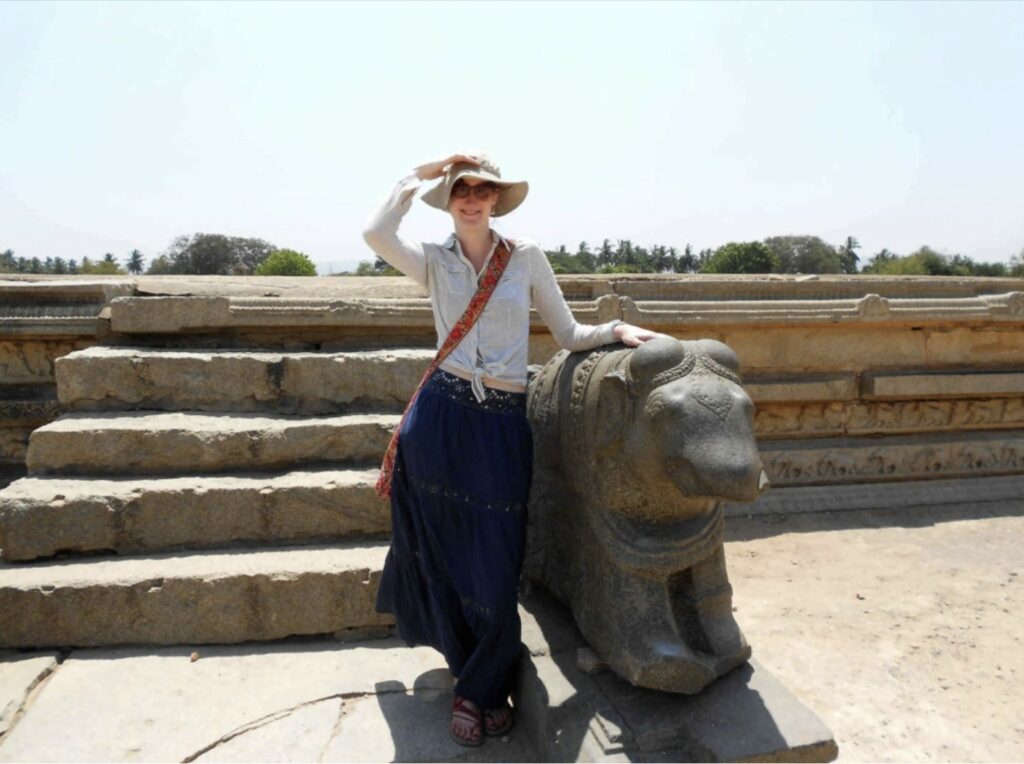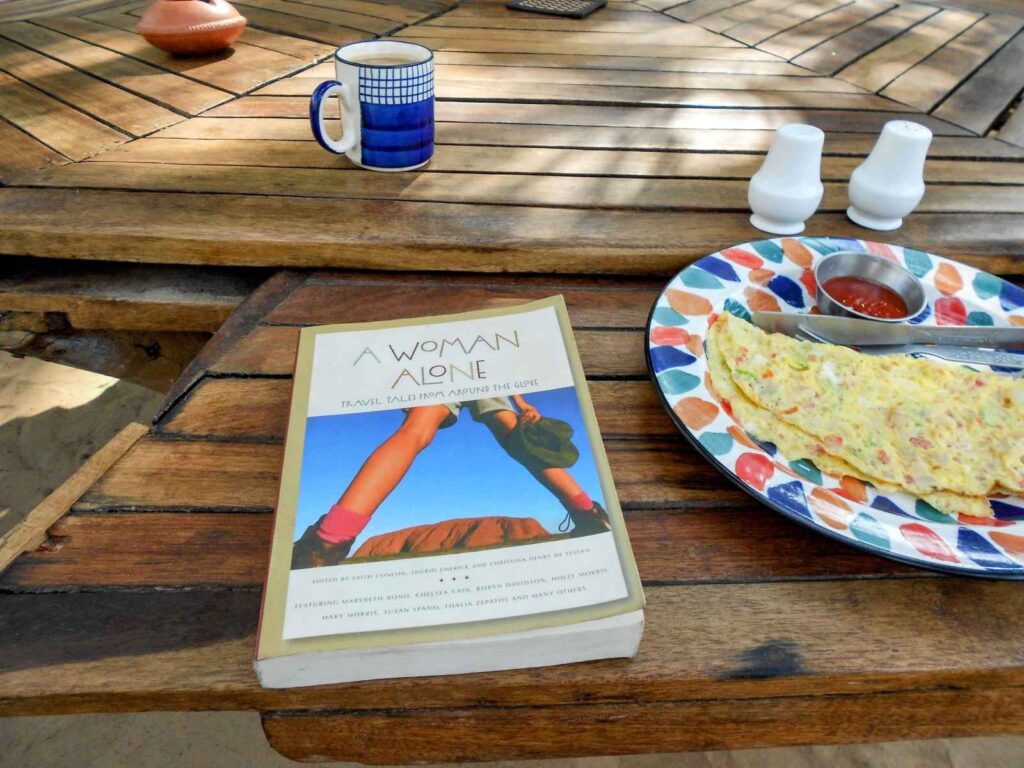Travelling around the world for six months can be exciting and deeply rewarding. It also raises practical questions about pace, commitment and expectations. I planned and took my own solo round-the-world trip around this timeframe, which gave me a clear view of what it involves. This guide explores what extended travel is actually like, so you can decide whether a 6 month trip around the world is realistic for you.
This post may contain affiliate links. That means, if you make a purchase, I may receive a small commission. As an Amazon Associate I earn from qualifying purchases. For more information, read my disclaimer.
Quick overview: deciding if a 6 month world trip is right
What this page will help you decide:
- Whether six months is too much or not enough time
- What a six-month trip really costs, and where people tend to panic financially
- How long-term travel can be structured without burning out
- The psychological realities people don’t talk about
- What actually happens to your job, apartment and relationships
- How to tell if this is realistic for your situation
- What long-term travel looked like for me in practice — not just the highlights
Is 6 months the right length of time?
Six months of travel sits in an awkward middle ground. It’s long enough to give you distance but also disrupt your work, routines and relationships. On the other hand, you may worry that it won’t be enough time to go everywhere and experience everything you want.
This page isn’t here to persuade you that six months is the right choice. It’s here to answer a more practical question: is a six-month round-the-world trip actually realistic?
For my solo round-the-world trip what mattered most in the end wasn’t the length. It was about how I structured and paced my journey, and how I managed my money and energy. And importantly, how much pressure I removed from the idea of doing it ‘perfectly’.
What a 6 month trip actually costs
One of my biggest fears while planning my trip was running out of money halfway around the world. This is one of the biggest psychological barriers to long-term travel. “Slow travel and selective destinations usually make the difference.
Costs tend to spike when people move too quickly, change plans constantly or try to do every possible activity in every destination. I spent around a month or more in each country I went to. This was simpler for my budget management, as well as cutting travel costs. It allowed me to negotiate discounts on longer stays and it was also calmer for my nervous system. Slower travel almost always costs less — financially and mentally.
In practical terms, a six-month trip typically costs between $10,000 to $20,000 (£8,000-£15,000) depending on where you go and how you travel. Southeast Asia, parts of South America and Eastern Europe sit at the lower end. Japan, Australia and Western and Northern Europe push costs higher. Those figures assume hostels or budget accommodation, local transport and eating at small local restaurants.
So the real question changes from “can I afford six months?” to “can I travel slowly and smartly enough to make six months sustainable?”
Will I burnout during six months of travel?
Travel burnout goes beyond jetlag. It involves deep tiredness from nonstop logistics, adapting to new environments, and disrupted routines. Burnout can come constant movement, decision-making and feeling that you’re falling behind your own expectations. This stress can turn initial excitement into fatigue, disinterest, illness and irritability.
I didn’t personally experience travel burnout. Most long-term travellers I met were surprisingly settled and content — particularly those who moved slowly and stayed longer in each place.
Six months works best when it’s structured around fewer bases, longer stays and built-in rest. Days where nothing happens aren’t wasted, this downtime makes the rest of the trip possible.
More psychological realities of extended travel that people don’t talk about
Long-term travel isn’t a continuous high. There are stretches of boredom, homesickness, loneliness and second-guessing. On more than one occasion I had the travel blues or felt lonely, even though I absolutely loved travelling by myself 99% of the time.
Understanding this beforehand matters, because it removes the fear that something has ‘gone wrong’ the first time you feel flat or uncertain. Those moments are part of what makes long-term travel survivable — and human.
What happens to your job, apartment and life at home
One of the biggest unknowns after quitting or taking time away from your work and homelife is what happens to what you leave behind.
Your job
With some employers you can negotiate a sabbatical or unpaid leave for your travels, particularly if you’ve been there several years and have built up goodwill. I ended up leaving my job entirely, which felt terrifying at the time but turned out to be a relief rather than as catastrophic than I’d imagined. A friend did a very similar trip to me and she was on sabbatical. While she had the security of being able to return to her job afterwards, psychologically it’s very different to temporarily cutting ties with traditional employment and the sense of freedom that brings.
Most people come back to work in some form. I haven’t met anyone who regretted taking a career break to travel. The gap on your CV matters less than you think, especially if you can frame the experience as intentional rather than aimless.
When I returned, I ended up moving to a different country, went for interviews and quickly secured work in a new industry – proving to myself that anything is possible.
Your apartment
I gave up my rented flat before I left and sold clothes I didn’t need on eBay. If you have furniture, you can put it in a storage unit while you’re away.
The administrative hassle of ending my lease, quitting my job and sorting out my belongings felt overwhelming – I even had a small panic attack. In the end, it took a few focused weeks and then it was done.
Relationships
Some friendships stayed strong. Others drifted, though not always in the ways I expected. The people I thought would stay closest sometimes faded. Others I hadn’t been as close to became the ones checking in regularly.
What surprised me most was how quickly life moved on without me. That sounds harsher than it felt. It was actually reassuring — proof that the world doesn’t stop if you step out of it for a while.
Six months doesn’t lock you into anything forever — but it does give you enough distance to see which parts of your old life still fit, and which don’t. That clarity is often the real value of a trip this length.
What a long-term world trip actually looked like for me
Years ago, I was stuck in a job that didn’t fulfil me, feeling anxious and restless. I needed a change and had always dreamed of seeing the world, but it took years of hesitation before I finally took the leap of faith. Eventually, I quit my job, gave up my apartment and booked a round-the-world ticket with the help of a travel agent. The idea of taking an extended journey was daunting, from figuring out where to go to managing the logistics.
In practice, my journey was quieter, slower and calmer than I expected. I didn’t pressure myself to see all the sights. My solo trip ended up lasting for ten months and it felt like a series of ordinary weeks, lived in (for me) extraordinary places.
There were long stretches where my days developed a surprisingly normal routine: doing a yoga class, finding a place to write my blog or read, eating simple local food or going for a walk. Some weeks were busy; others were deliberately slow and I built in rest days without guilt. I stayed longer when I felt settled and moved on when I felt restless, not when an itinerary told me to.
There were also harder moments. I experienced a nasty bout of food poisoning. One airline put my backpack on the wrong flight. Loneliness showed up even in beautiful places. I learned to take these things in my stride and to stay open to opportunities when they arose. At times I had to pull myself out of a bad mood. Once I stopped trying to make every place feel perfect, the trip became sustainable.
Signs this is (or isn’t) doable for you
It might not be the right time for you to take a six month trip around the world if you’re stretched financially with no buffer for emergencies or unexpected costs. If your career or personal situation is at a critical point and leaving now would cause you regret, that’s worth taking seriously. This may not work if you’re travelling to escape problems and hoping it will be a guaranteed panacea.
A six-month trip is more realistic if you can save up $10,000 to $20,000. Having a financial buffer helps psychologically as well as practically. Being comfortable with uncertainty helps, as plans will shift and things will go wrong. Finally, if you accept that you won’t see everything and you don’t try to cram in every must-see destination, the trip will be much more attainable.
Frequently asked questions about a 6 month round-the-world trip
How much is it to travel the world for 6 months?
In Southeast Asia, parts of South America and Eastern Europe can comfortably work on $10,000 to $15,000 for six months if you stay in hostels, eat local food and don’t move constantly. Spending this same amount of time in Japan, Australia and Western Europe will easily push you towards $20,000 or more.
Am I too old to travel the world?
You’re never too old. Hostels aren’t all 18-year-olds. Many cater to older travellers or have private rooms. You’ll find your people. I was in my 30s when I travelled, and I met plenty of people the same age or older travelling long-term. When you’re older, you tend to have clearer boundaries about what you actually want from travel, which often makes the experience better, not worse.
What if I hate it – can I come home early?
In my experience, this is unlikely – I didn’t meet anyone who this happened to. But if you do feel drained or disillusioned during your trip, it may be a case of travel burnout from moving too fast, trying to pack too much in or expecting too much from the experience. Slowing down, staying put for a few weeks or taking a break back home doesn’t mean the trip was a failure. That said, if you’re genuinely miserable, coming home early is a completely valid choice.
Will I get lonely travelling alone for 6 months?
Sometimes, yes. Even in beautiful places surrounded by other travellers, loneliness can show up unexpectedly. It’s usually most intense in transitions – arriving somewhere new, leaving a place you’d settled into or during quiet weeks where you haven’t connected with anyone. Those moments are normal, not a sign you’re doing something wrong. The loneliness tends to come in short moments rather than being constant. Hostels, group activities and staying put longer all help, but it’s worth knowing it’s part of the experience for most solo travellers.
Do I need special insurance for a 6 month world trip?
Yes, as standard travel insurance typically only covers trips up to 30-90 days. For six months, you will need either extended travel insurance or an annual multi-trip policy.
Make sure it covers medical emergencies, trip cancellations, lost belongings and any adventure activities you’re planning like scuba diving or trekking. Emergencies abroad can be expensive so it’s better to take precautions.
Final thoughts taking a 6 month trip around the world
For many people, six months is a good amount of time. Long enough to step out of your routine and gain perspective, while being short enough to remain adaptable.
It’s realistic if you’re willing to travel slowly and build in rest days. It’s better to be comfortable with keeping your plan flexible, rather than needing everything locked in beforehand. This is usually what separates people who manage six months well from those who struggle.
Once you’ve decided whether six months is feasible for you, the next step is structuring a route that supports the pace you need. I cover that in my guide to planning a round-the-world itinerary.






